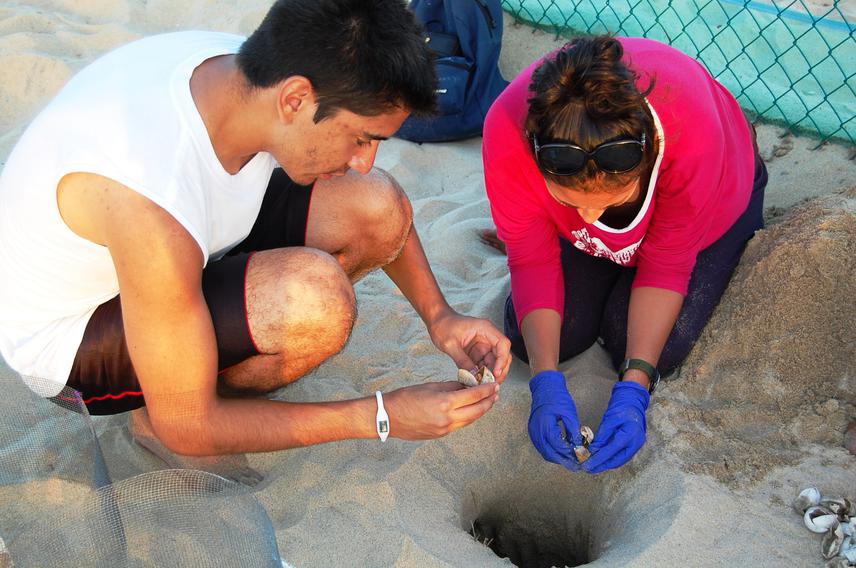Stephanie J. Rousso
Other projects
16 Feb 2015
Creation of a Model for Conservation Tourism through Community-based Research and Outreach
This project has three parts: research, education, and conservation. In México, nesting habitat for Lepidochyles olivacea, an endangered marine turtle species, is threatened by encroaching, unregulated coastal development and high impact tourism activities. This project will develop a model for tourism that incorporates conservation of coastal habitats for marine turtle nesting.

Students reviewing eggs that didn´t hatch in a relocated nest.
Conservation Tourism development and low impact activities have the potential to mitigate habitat fragmentation and loss for marine turtle nesting. By incorporating marine turtle nesting data into development plans and creating tourism activities that integrate biologists and local community members, we aim to form a model for conservation tourism. The model will be promoted at the university level to students who can integrate the information into their future careers. Implementation of the model can serve as a powerful tool for conservation of marine turtle populations, raise a global awareness through tourism, and change the traditional mentality of sun and beach tourism development and high impact tourism activities.
This project has three parts: research, education, and conservation. In México, nesting habitat for Lepidochyles olivacea, an endangered marine turtle species, is threatened by encroaching, unregulated coastal development and high impact tourism activities. This project will develop a model for tourism that incorporates conservation of coastal habitats for marine turtle nesting.
The research phase includes collection of beach profile data and nest density data. The data will be incorporated into a national database managed and operated by the Méxican Federal Commission for Biodiversity (CONABIO). The beach profile data will allow us to monitor changes in beach morphology over time due to climate change impacts and coastal development by calculating the volume of erosion and accretion sand in different areas. This will help us determine areas we can use for in-situ nest monitoring rather than the current method of relocation to protective corrals. In this way, we can later propose coastal dune protection areas for the conservation of marine turtle habitat. The education phase includes incorporating university students. Locally, popular undergraduate programs include tourism development and alternative tourism.
However, these programs often lack a conservation focus. Participating students will learn to apply scientific data into tourism development plans and create conservation tourism activities. The conservation aspect includes the creation of a Marine Turtle Conservation Tourism model which will include how to incorporate conservation areas into coastal development plans, guided interpretation of marine turtle monitoring efforts for tourism activities, example signage for coastal developments to raise awareness of the protection and conservation of marine turtle nesting habitat, and examples of sustainable development.